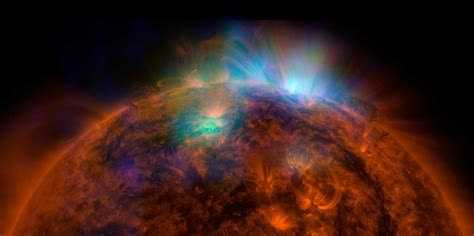The sheer size and dynamic nature of the cosmos are ever so elegantly highlighted by NASA’s Parker Solar Probe’s recent endeavor through the sun’s corona. Capturing what appears to be a massive vortex, this event not only pushed the boundaries of what we’ve visually captured but also offers a profound perspective on the spatial dimensions we deal with in space science. Estimates based on the footage suggest that the features span lengths from three to approximately 13 times the diameter of Earth. Such comparisons bring a stark realization about the colossal scale of phenomena occurring right at our nearest star.
The public’s engagement and curiosity about such missions are palpable, as evidenced by the diverse range of questions and comments that arise following such revelations. Questions like ‘How big is this vortex?’ or requests for a simpler explanation indicate a broad spectrum of audience interest and the need for accessible scientific communication. This reflects a growing popularity and interest in space exploration beyond merely academic or scientific communities. Here, the blend of advanced scientific instruments and media accessibility synergizes to demystify the solar mysteries, making them more palpable to the general public.
The technical intricacies involved in capturing such phenomena cannot be understated. Flying through the sun’s atmosphere, enduring temperatures around 2,500 degrees Fahrenheit and speeds nearing 0.1% the speed of light, the Parker Solar Probe’s mission is as technically challenging as it is scientifically valuable. This highlights the extreme conditions that space missions must prepare for and the robust engineering behind spacecraft design and instrumentation, which must reliably operate under such harsh conditions.
Amidst the scientific excitement, there was also a discussion on the absence of color in the footage and the use of false colorizing techniques. It’s frequently misunderstood that such technological choices are merely aesthetic; however, they are deeply rooted in scientific rationale. Monochrome detectors, used in many high-end telescopes and space probes, provide greater sensitivity and resolution than color sensors, which is crucial when capturing detailed cosmic phenomena. The choice of imaging technology is a calculated decision to maximize the scientific yield from missions like these.
Another intriguing aspect of space missions highlighted by this event is the concept of using celestial mechanics, like gravity assists or ‘slingshots,’ to navigate and accelerate spacecraft. Such maneuvers intricately balance the gravitational forces of planetary bodies to alter spacecraft trajectories and speeds significantly without using additional propulsion, showcasing a blend of classical physics and modern technology. Understanding these methods opens a fascinating window into how we explore our larger cosmic neighborhood without direct propulsion means, and emphasizes the intricacies of orbital mechanics.
The philosophical and practical implications of current space missions extend well beyond simple exploration. They challenge our understanding of physics, prompt revisions of long-standing theories, and inspire theoretical and practical innovations. Events like the capture of a sun vortex test our limits of comprehension and measurement, stretching our technological and scientific paradigms. In essence, they not only expand our knowledge and boundaries in space but also in the sciences that govern these explorations.
Ultimately, the convergence of advanced technologies, scientific curiosity, and a quest for understanding cosmic phenomena like the sun’s vortex presents a compelling narrative of human ingenuity and the relentless pursuit of knowledge. Each mission brings us closer to answering fundamental questions about our universe, enhancing our capabilities to observe, measure, and understand the complexities of celestial mechanics and phenomena. As we continue to push these boundaries, the synergy between technology and science drives us towards ever greater explorations and discoveries in the limitless expanse of space.


Leave a Reply